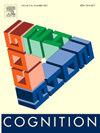负极性错觉对“永远”和“任意”都是稳健的(当线性位置保持不变时)。
IF 2.8
1区 心理学
Q1 PSYCHOLOGY, EXPERIMENTAL
引用次数: 0
摘要
许多研究利用语言错觉来探讨增量语言理解过程中的表征和机制。这项研究计划的一个关键组成部分是绘制出何时产生幻觉,何时不产生幻觉。为此,我们研究了用负极性项目(npi)观察到的语言错觉的普遍性。大多数先前的工作只使用单一的NPI(或其他语言中的类似物)来研究错觉,但错觉现象的所有模型都隐含地预测错觉应该在不同的NPI中推广。与这一预测明显矛盾的是,帕克和菲利普斯(2016)发现了可靠的幻觉,但没有发现以前未经测试的NPI。在他们的原始论文中,作者认为这种不对称源于两个npi在他们的测试项目中的线性位置的差异。然而,作者并没有建立一个基本的经验概括,即当线性位置的混淆因素被排除在外时,任何人实际上都容易受到错觉的影响。因此,他们的发现同样与一种假设相一致,即在对错觉的固有易感性中存在细微的词汇变化,这将对该现象的所有理论产生严重影响。为了解决经验记录,我们进行了一项更高功率的研究,比较了帕克和菲利普斯(2016)改编的任何使用项目,使两个npi在测试句子中占据相同的顺序位置。我们发现两种npi都存在类似的错觉,这对该现象的所有候选理论来说都是一个受欢迎的结果,并且与Parker和Phillips(2016)对npi缺失的基于距离的解释一致。本文章由计算机程序翻译,如有差异,请以英文原文为准。
Negative polarity illusions are robust with both ‘ever’ and ‘any’ (when linear position is held constant)
Many studies have used linguistic illusions to probe the representations and mechanisms used during incremental language comprehension. A crucial component of this research program is mapping out when illusions occur and when they do not. To this end, we investigate the generality of a linguistic illusion observed with negative polarity items (NPIs). Most previous work has only investigated the illusion using a single NPI, ever (or its analogue in other languages), but all models of the illusion phenomenon implicitly predict that illusions should generalize across different NPIs. In apparent contradiction to this prediction Parker and Phillips (2016) found reliable illusions with ever, but not with the previously untested NPI any. In their original paper, the authors suggested that the asymmetry stemmed from differences in the linear position of the two NPIs in their test items. However, the authors did not establish the basic empirical generalization that any is, in fact, susceptible to the illusion when the confound of linear position is factored out. As such, their findings are equally compatible with the hypothesis that there is fine-grained lexical variation in inherent susceptibility to the illusion, which would have serious implications for all theories of the phenomenon. To settle the empirical record, we conducted a higher-power study comparing ever and any using items adapted from Parker and Phillips (2016) such that the two NPIs occupied the same ordinal position in their test sentences. We find comparable illusions for both NPIs, a welcome result for all candidate theories of the phenomenon and consistent with the distance-based explanation for its absence in Parker and Phillips (2016).
求助全文
通过发布文献求助,成功后即可免费获取论文全文。
去求助
来源期刊

Cognition
PSYCHOLOGY, EXPERIMENTAL-
CiteScore
6.40
自引率
5.90%
发文量
283
期刊介绍:
Cognition is an international journal that publishes theoretical and experimental papers on the study of the mind. It covers a wide variety of subjects concerning all the different aspects of cognition, ranging from biological and experimental studies to formal analysis. Contributions from the fields of psychology, neuroscience, linguistics, computer science, mathematics, ethology and philosophy are welcome in this journal provided that they have some bearing on the functioning of the mind. In addition, the journal serves as a forum for discussion of social and political aspects of cognitive science.
 求助内容:
求助内容: 应助结果提醒方式:
应助结果提醒方式:


